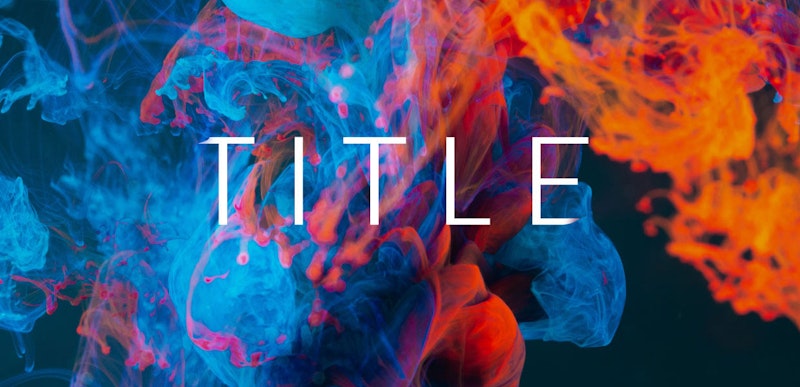Introduction
Hi Guys! This is Jordan with Motion Array, and today we’re showing you how to use our Davinci Resolve title templates! Here is a link to the Free Simple Titles.
How To Use DaVinci Resolve Title Templates
In order to import your title templates, you’re going to want to restore them as a project.
To do this, you’re simply going to find your project manager. This is what appears at the beginning when you open up DaVinci Resolve. If you’re already within a project, just go to file, project manager.
From here you can just right-click anywhere in the grey and select restore. This will pop up a window for you to choose the title templates from their location on your computer. So I’m going to find a free title template to use for this example. Once I’ve found them, you should see that there’s a variety of different versions of the same project, each in a different standardized framerate. This is something that we’ve done so you can choose the right frame rate for your current project. This is because, at the moment, DaVinci Resolve has troubles switching timeline frame rates mid-project. So let’s say that we have a project that’s using a frame rate of 29.97, we want to select the project with that framerate listed in the title. Great!
So now when we hit ok, we can see that it opens up as it’s own project in our manager. Double click on it and open it up. From here you should be taken to the project holding your title templates. If you want to work with them here, then you can begin that process, but chances are that you’re going to want to add them to an already existing project. So we’re going to show you how to do that right now.
Go up to the media pool here which holds your text templates. And we’re simply going to click and drag over the top of them to highlight them and then copy them by going by hitting control or command C, or by going up to edit, copy.
Now with this copy, we’re going to save our project quickly and then go back to our project manager. To do this, go back up to file, project manager, and then from here, we can open back up the previous project that we were working on.
Great! Now in our media pool for this project, we can paste the text templates by hitting Command or Control + V or by going up to edit, paste. And now our templates are available inside of our project! To use one of these templates, just double click on it to open up its personal timeline. Then copy this clip, and paste it into your project, and it’ll appear wherever your playhead is over.
Awesome! So now your text template is inside of your project! So let’s take a look at how to work with it. Working with templates in DaVinci Resolve is a lot like using MOGRT files in Premiere Pro, giving you a stylish effect that you can change parameters within a flash.
To access the items that you can change within these templates, highlight the template that you’re working with, and go up to the inspector window here, making sure that the fusion tab is selected. From here you can make changes to different elements depending on the template in question, but for this one, we can change what the text says,
We can change its font.
We can change its color.
As well as a host of other things. But because there are more elements at play in this template, we have more parameters that we can change.
For this template, we can change the color of these light rays here. But we can also change a variety of other parameters that influence how the light rays look. With each new template, it would be beneficial to explore what each of these parameters does by adjusting them and seeing how they influence your resulting text effect.
Something you may find yourself doing with these text templates is using one and then copying it to add subtle variations while still retaining a cohesive feel to your project. We’re happy to say that when you copy and paste one of these template files within your timeline, you can make changes to the new version without impacting the original that it came from, meaning that finishing your video just got even faster!
Well, that concludes this tutorial. I hope you found it helpful, if you did, please give us a thumbs up and if you’d like to see more tutorials please go ahead and subscribe because we’re making new ones all the time. We’ve got lots of other Premiere Pro tutorials, After Effects tutorials, filmmaking tutorials, and yes, also tutorials for DaVinci Resolve!



























